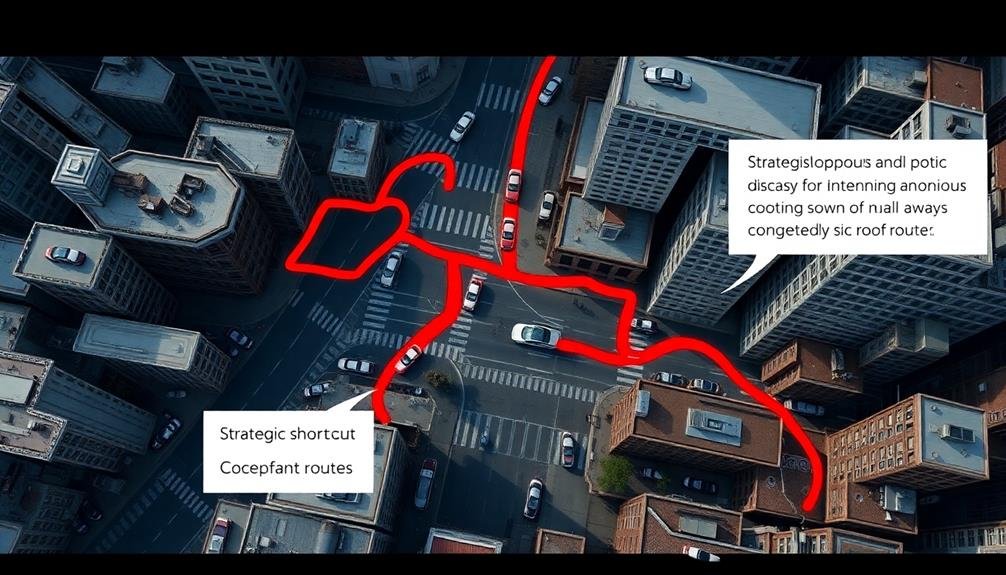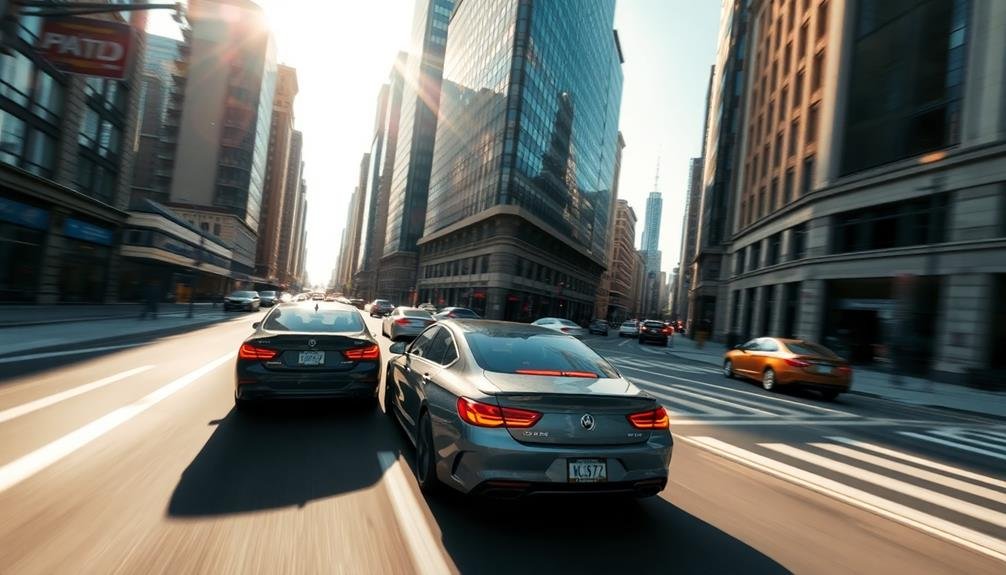To create epic movie chase scenes, start by meticulously planning your flight path. Map out the entire route, incorporating dramatic elements like sharp turns and narrow escapes. Next, master dynamic camera movements. Mix handheld shots for urgency with smooth tracking shots for context, and use unconventional angles to amp up the drama. Finally, optimize your drone settings for cinematic perfection. Set a high frame rate, adjust shutter speed accordingly, and enable sport mode for increased speed. By focusing on these three key areas, you'll transform your chase scenes from ordinary to extraordinary. Buckle up, as we're about to accelerate into the details of each tip.
Plan Your Flight Path

In order to create a thrilling movie chase scene, you'll need to meticulously plan your flight path. Start by mapping out the entire route, considering the terrain, obstacles, and potential hazards.
Think about how you can incorporate dramatic elements like sharp turns, narrow escapes, and unexpected detours to keep the audience on the edge of their seats.
Consider the vehicles involved in the chase and how they'll interact with the environment. A car chase through city streets will require different planning than a motorcycle pursuit through winding mountain roads.
Factor in the speed of the vehicles and how that impacts the pacing of the scene.
Don't forget to plan for key moments that'll heighten the tension, such as near-misses with pedestrians or other vehicles, or daring maneuvers that showcase the characters' skills.
Include opportunities for the pursuer to gain ground and the pursued to narrowly escape.
Master Dynamic Camera Movements

Camera work is the heart of any thrilling chase scene. To master dynamic camera movements, you'll need to experiment with various techniques. Start by using handheld cameras for a raw, immediate feel. This creates a sense of urgency and puts viewers right in the action. Don't be afraid to use unconventional angles – low shots, high shots, and Dutch angles can add drama and disorientation.
Incorporate smooth tracking shots to follow your characters as they race through environments. Use dollies, Steadicams, or even drones for fluid movement. For intense moments, try whip pans or crash zooms to heighten tension. Remember, your camera choices should reflect the emotion and pace of the chase.
Here's a quick guide to camera movements and their emotional impact:
| Camera Movement | Emotion Evoked | Best Used For |
|---|---|---|
| Handheld | Chaos, urgency | Street chases |
| Steadicam | Fluidity, grace | Parkour scenes |
| Drone shots | Scale, freedom | Car pursuits |
Lastly, edit your footage with a mix of wide shots for context and close-ups for intensity. Vary your shot lengths to control pacing, using shorter cuts during high-energy moments and longer takes to build suspense.
Optimize Drone Settings

Drones frequently revolutionize chase scenes, but you'll need to enhance their settings for the best results. Start by setting your drone's camera to a high frame rate, typically 60fps or higher, to capture smooth, fluid motion. Adjust the shutter speed to match your frame rate, following the 180-degree shutter rule for natural-looking motion blur.
Configure your drone's flight settings for peak performance. Enable sport mode for increased speed and responsiveness, but be cautious of reduced obstacle avoidance capabilities. Set your gimbal to follow mode, allowing it to smoothly track the action while maintaining a stable shot.
To achieve the best footage, consider these key drone settings:
- ISO: Keep it as low as possible for clean, noise-free images
- Aperture: Use a wider aperture for better low-light performance and a shallower depth of field
- White balance: Set to auto or manually adjust based on lighting conditions
Frequently Asked Questions
How Do I Ensure Safety for Actors During High-Speed Chase Scenes?
You'll need professional stunt coordinators, safety equipment, and extensive rehearsals. Use trained stunt drivers, closed roads, and proper vehicle maintenance. Don't push actors beyond their limits. Always prioritize safety over spectacle in high-speed chases.
What Are the Legal Requirements for Filming Chase Scenes in Public Areas?
You'll need permits from local authorities to film chase scenes in public areas. You must follow traffic laws, guarantee pedestrian safety, and obtain property owners' permission. Don't forget insurance coverage and potential road closures for filming.
How Can I Create Realistic Sound Effects for Movie Chases?
You'll want to combine recorded sounds with digital effects. Use Foley techniques for tire screeches and footsteps. Layer engine noises, sirens, and ambient city sounds. Don't forget impacts and crashes. Adjust volume and panning for realism.
What Stunts Work Best for Enhancing the Excitement of Chase Sequences?
You'll want to incorporate daring jumps, narrow escapes, and unexpected obstacles. Try vehicle flips, rooftop parkour, or high-speed weaving through traffic. Don't forget close calls and near misses to keep viewers on the edge of their seats.
How Do I Choreograph Multiple Vehicles in a Complex Chase Scene?
You'll need to map out each vehicle's path and timing carefully. Storyboard the sequence, use scale models or CGI previsualization, and coordinate closely with stunt drivers. Consider varying speeds, near-misses, and obstacles to maintain tension throughout the chase.
In Summary
You've now got the tools to create thrilling chase scenes that'll keep viewers on the edge of their seats. Remember to map out your flight path, perfect those dynamic camera moves, and dial in your drone settings for peak performance. With practice, you'll be capturing heart-pounding pursuits like a pro. Don't be afraid to experiment and push boundaries. Your creativity and these techniques will elevate your chase scenes to blockbuster status. Now go out there and start filming!

As educators and advocates for responsible drone use, we’re committed to sharing our knowledge and expertise with aspiring aerial photographers.




Leave a Reply